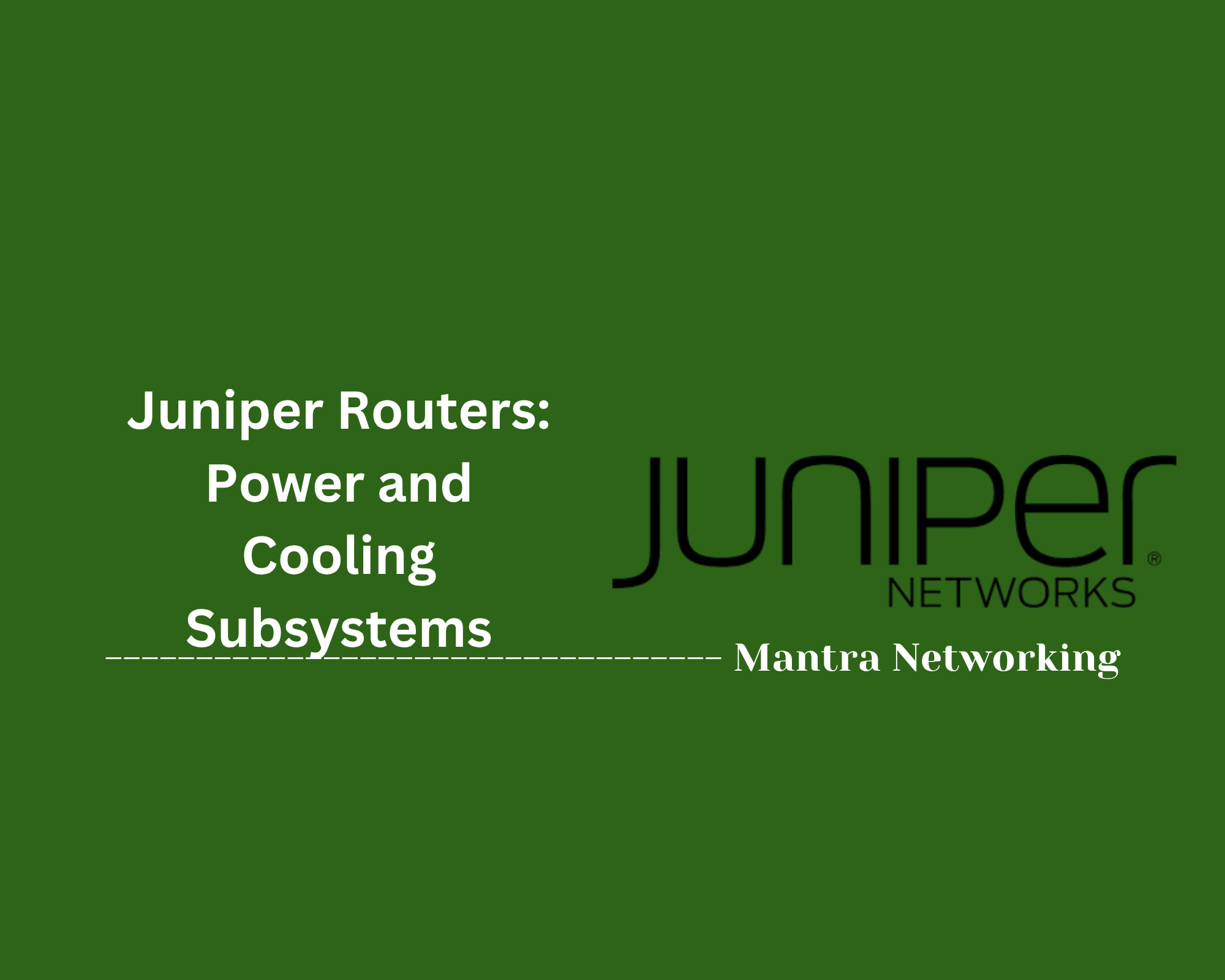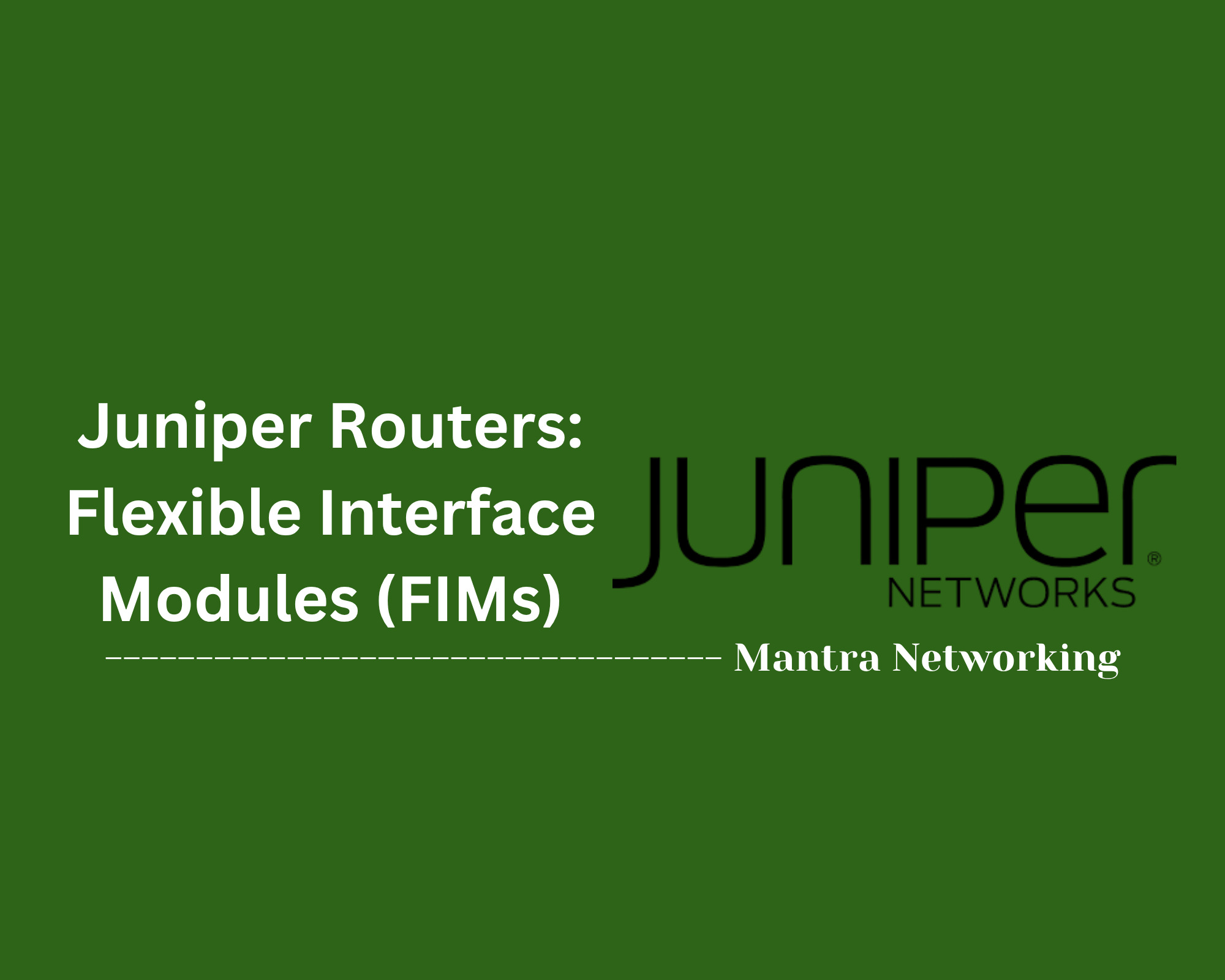Table of Contents
- Overview
- Key Juniper ASIC Families
- Technical Innovations
- Performance Benchmarks
- ASIC Implementation in Switches
- Feature Summary
- Ongoing Developments and Industry Engagement
- Conclusion
Overview of ASICs (Application-Specific Integrated Circuits)
What is an ASIC?
An ASIC, or Application-Specific Integrated Circuit, is a type of semiconductor chip designed for one particular application or function, rather than for general-purpose use. Unlike standard processors such as CPUs (Central Processing Units) or FPGAs (Field-Programmable Gate Arrays), which are designed to handle a wide range of tasks, ASICs are custom-built to perform a specific operation with maximum efficiency.
Why Should You Know About ASICs?
- Performance and Efficiency: ASICs are engineered for a targeted task, which enables higher speed, lower power consumption, and greater throughput than general-purpose processors can provide in the same application.
- Ubiquity in Technology: They are foundational in countless devices that power modern life, including smartphones, networking equipment, automotive systems, video game consoles, and more.
- Critical to Specialized Industries: In fields like networking, telecommunications, cryptocurrency mining, and AI, ASICs drive technological advancements by enabling faster and more reliable operations.
- Cost and Competitive Advantage: Although developing ASICs involves higher upfront costs and engineering complexity, their long-term deployment offers operational cost savings, lower energy use, and differentiated features for businesses.
How Do ASICs Work?
- Custom Design: Engineers design an ASIC with a fixed logic circuit optimized for a specific function — for example, managing network packet forwarding, compressing video, or encrypting data.
- Manufacturing: Once designed, the ASIC’s circuit layout is etched into silicon wafers during a bespoke manufacturing process. Unlike reprogrammable chips, their logic cannot be changed after fabrication.
- Deployment in Systems: The resulting chip is integrated into larger electronic systems where its single-purpose efficiency accelerates the critical workloads that general processors would perform more slowly or with greater energy demands.
- Advantages: By eliminating unnecessary logic and focusing all silicon resources on the precise needs of the application, ASICs achieve lower latency, higher throughput, and better power efficiency compared to multipurpose alternatives.
In summary, ASICs are the unseen workhorses behind many of today’s specialized electronic functions — delivering tailored performance that enables the rapid growth of networking, mobile technology, cloud infrastructure, and countless other innovations.
Key Juniper ASIC Families
Juniper Networks develops specialized ASICs (Application-Specific Integrated Circuits) that serve as the core technology behind their switches and routers, each optimized for different networking workloads and use cases.
- Express ASIC Family: Designed for high-throughput switching applications, Express ASICs power platforms such as PTX routers and QFX series switches. They feature modular chiplet architecture and integrate advanced memory like HBM/HBM2e, enabling up to 28.8Tbps per chip.
- Trio ASIC Family: Optimized for feature-rich edge routing, Trio ASICs are used in MX-series routers. These ASICs support integrated forwarding, logical scale expansion, and advanced network services including Quality of Service (QoS) and telemetry.
- Paradise (Q5) ASIC Family: A previous-generation switching ASIC found in QFX10000 switches, Paradise ASICs provide 500Gbps per chip with large buffers (4GB HMC per ASIC) and dedicated forwarding information base (FIB) and MAC address storage.
Understanding these ASIC families helps network architects select the right Juniper hardware tailored to performance needs and deployment scenarios.
Technical Innovations
Juniper Networks incorporates several cutting-edge technologies into its ASICs to enhance performance, scalability, and efficiency in modern networking environments:
-
System-in-Package (SiP) Design:
Integrates ASIC dies and high-bandwidth memory (HBM/HBM2e) within a single package using silicon interposers. This approach increases data throughput while reducing latency and power consumption. -
Modular Chiplet Architecture:
Rather than large monolithic chips, Juniper’s latest ASICs use modular chiplets specialized for different functions. These chiplets are interconnected with high-speed SerDes, allowing for flexible performance scaling and faster innovation cycles. -
Advanced Memory Integration:
Incorporates Hybrid Memory Cube (HMC) and HBM/HBM2e technologies enabling deep packet buffering, which is crucial for handling network congestion and bursty traffic without packet loss. -
Programmability:
Supports programmatic interfaces and in-hardware telemetry to enable advanced network automation, real-time monitoring, and security features directly from the ASIC. -
Power Efficiency:
Successive ASIC generations improve power consumption by up to 70%, lowering operational costs and supporting environmentally sustainable networking deployments.
Performance Benchmarks
Juniper’s ASIC families demonstrate industry-leading performance benchmarks, setting high standards for throughput, efficiency, and scalability in networking hardware. Below is a step-by-step breakdown of performance metrics for recent Juniper ASICs:
-
Assess Throughput and Port Density:
- Express 5 ASIC: Provides up to 28.8 Tbps of throughput per chip, supporting configurations like 36 × 800GbE or 72 × 400GbE ports in a compact, fixed form factor. This performance is recognized as one of the highest in the industry for single-chip solutions[6][14][18].
- Trio 6 ASIC: Delivers 9.6 Tbps per slot as seen in the MX10K LC9600 line card, operating at 0.09 watts per gigabit for remarkable efficiency. It features up to 32 x 400GbE WAN-facing ports, supporting a wide range of edge deployments[5][7][15].
- Q5 (Paradise) ASIC: Enables forwarding capacities up to 1 Tbps per ASIC, with extensive memory integration for deep buffering and logical scale, powering QFX10000 switches[8][16].
-
Evaluate Power Efficiency:
- The Express 5 achieves approximately 45% better power efficiency than prior generations, while the Trio 6 delivers up to 70% improvement over its predecessor[5][6][14].
-
Scalability and Advanced Features:
- Express 5 supports up to 16 million IPv4 prefixes and hundreds of thousands of overlay tunnels, addressing future-proofing and large network scale requirements[10].
- Trio 6 and Express 5 both offer hardware-level MACsec and inline telemetry, ensuring secure, observable networking at scale[5][7].
-
Summary Table: Juniper ASIC Performance
ASIC Family Throughput Power Efficiency* Port Scalability Example Platform Express 5 Up to 28.8 Tbps[6][14][18] 45% improvement vs. previous[5][14] 36 × 800GbE / 72 × 400GbE PTX routers, QFX series[6][10] Trio 6 Up to 9.6 Tbps per slot[5][7][15] 70% improvement vs. previous[5][15] 32 × 400GbE (WAN ports) MX10K (LC9600)[5][7] Q5 (Paradise) Up to 1 Tbps per ASIC[8][16] 17% better with HMC[8] 48 × 10GbE, 5 × 100GbE, or more QFX10000[8][16] *Power efficiency improvements are relative to previous Juniper silicon generations.
Juniper’s ASIC performance sets them apart for deployment in data centers, edge, cloud, and carrier-grade networks, where maximum throughput, low latency, and massive scalability are key requirements.
ASIC Implementation in Switches
Understanding how specific ASICs are implemented across Juniper switch platforms is essential for matching hardware to networking needs. The following outlines, step by step, how PASIC (Packet ASIC) integration determines device performance and feature sets in various Juniper switches.
-
Identify the Platform and Associated ASIC:
Each Juniper switch series is built around a particular ASIC family, which defines its forwarding capabilities, scalability, and supported services. -
Map ASIC Features to Switch Functionality:
Deep buffers, integrated telemetry, programmability, and security offload are introduced by the ASIC and directly impact the capabilities available on each hardware platform. -
Review Examples of ASIC-Switch Pairings:
Platform Example ASIC Family Core Use Case QFX10002-36Q Paradise (Q5) Edge/core aggregation PTX10002 ExpressPlus/Express High-end core routing/switching MX304, MX10K Trio 6 Multi-service edge routing EX2300 Custom Juniper ASIC Entry-level campus switching -
Deployment Considerations:
Selecting the right ASIC-switch combination involves understanding requirements for throughput, memory, programmability, feature sets (like telemetry or security), and scale. -
Linking Implementation to Real-World Outcomes:
High-performance PASICs unlock advanced features such as deep packet buffering, rapid failover, robust security processing, and granular network visibility directly in hardware, benefiting both enterprise and service provider deployments.
By aligning switch platforms with the right ASICs, organizations can optimize their networks for efficient data flow, scalability, and operational agility.
Feature Summary
Juniper ASICs come packed with advanced features that enable high performance, scalability, and enhanced network functionality. Below is a step-by-step explanation of the key features provided by Juniper’s ASIC families:
-
Deep Buffering:
Juniper ASICs like Paradise (Q5), Express, and Trio integrate large external buffers using HBM or HMC memory technologies. These deep buffers help manage congestion and enable lossless Ethernet, improving overall network reliability. -
Advanced Telemetry:
Hardware acceleration for in-band network telemetry allows real-time monitoring of traffic and network health. This supports enhanced troubleshooting, analytics, and network automation capabilities. -
Security Offload:
Integration of MACsec and IPsec encryption at the ASIC level offloads cryptographic processing from CPUs, enabling secure, high-speed data transfer with minimal performance impact. -
Programmability:
Latest ASICs support programmable pipelines and APIs to enable custom packet processing, flexible protocol support, and rapid feature deployment that adapt to evolving network requirements. -
Power Efficiency:
Juniper ASIC generations demonstrate significant power consumption improvements—up to 70% better efficiency—reducing operational costs and supporting greener, sustainable networking initiatives.
These features collectively empower Juniper’s networking platforms to meet the demanding needs of modern data centers, enterprise environments, and service provider infrastructure.
Ongoing Developments and Industry Engagement
Juniper Networks remains at the forefront of ASIC innovation through both internal research and collaboration with key industry stakeholders. Here is a step-by-step walkthrough of the latest advancements and how Juniper drives industry engagement:
-
Continuous Silicon Innovation:
Juniper consistently develops new generations of ASICs—like the chiplet-based Express 5—that support increased performance, energy efficiency, and expanding capabilities to meet growing demands across service providers, data centers, and AI/ML workloads[1][2]. -
Adoption of Advanced Manufacturing Techniques:
The move to system-in-package (SiP) designs, using modular chiplets and high-bandwidth memory, allows Juniper to keep scaling network performance even as conventional CMOS scaling slows. This enables cost-effective, sustainable production of increasingly complex ASICs[2][5]. -
Active Participation in Standards Bodies:
Juniper is an active participant and contributor to industry standards organizations such as IEEE, OIF (Optical Internetworking Forum), and the UCIe Consortium. Their work influences packaging, I/O standards, and silicon interoperability to support robust multi-vendor networks[2]. -
Open Ecosystems and Partnership Programs:
Juniper promotes open networking through multivendor collaboration (e.g., Juniper Apstra, the multi-vendor fabric management tool) and joint initiatives with other hardware and software vendors to test and validate AI and high-performance data center solutions[8][9]. -
Focus on Sustainability and Efficiency:
Ongoing development efforts put a strong emphasis on sustainability, including power-efficient chip architectures and resource-efficient manufacturing to help operators lower environmental impact while scaling performance[2][6]. -
Customer and Developer Engagement:
With initiatives like public test labs and developer programs, Juniper actively involves customers and the broader technology community to validate solutions, foster innovation, and accelerate industry progress[9].
Juniper’s dedicated approach to ongoing ASIC development and active industry engagement ensures that its networking solutions remain innovative, interoperable, and future-ready for enterprises and service providers worldwide.
Conclusion
Throughout this deep dive into Juniper Networks’ ASICs (Application-Specific Integrated Circuits), we’ve uncovered the pivotal role these custom chips play in powering modern, high-performance networking equipment. From the scalable, modular Express family designed for massive throughput, to the versatile and programmable Trio ASICs tailored for feature-rich edge routing, and the proven Paradise (Q5) ASICs that laid the groundwork for today’s technologies, Juniper continuously pushes the boundaries of what’s possible in networking silicon.
We explored how Juniper’s technical innovations — including system-in-package designs, chiplet architectures, integration of cutting-edge memory technologies, along with an increasing focus on programmability and power efficiency — collectively deliver robust, scalable, and energy-efficient infrastructure to meet evolving data center, cloud, and service provider demands.
By understanding the performance benchmarks, implementation strategies, and ongoing industry engagement driving these ASICs, network professionals are better equipped to select and deploy Juniper platforms that align with their workload requirements and future-proof their infrastructure.
Thank you for joining us on this journey into Juniper ASICs! We hope this breakdown has clarified the technology behind the switches and routers powering today’s networks and inspired confidence in navigating the choices ahead. Stay tuned for more insights and deep dives into network innovations.
Happy networking!



